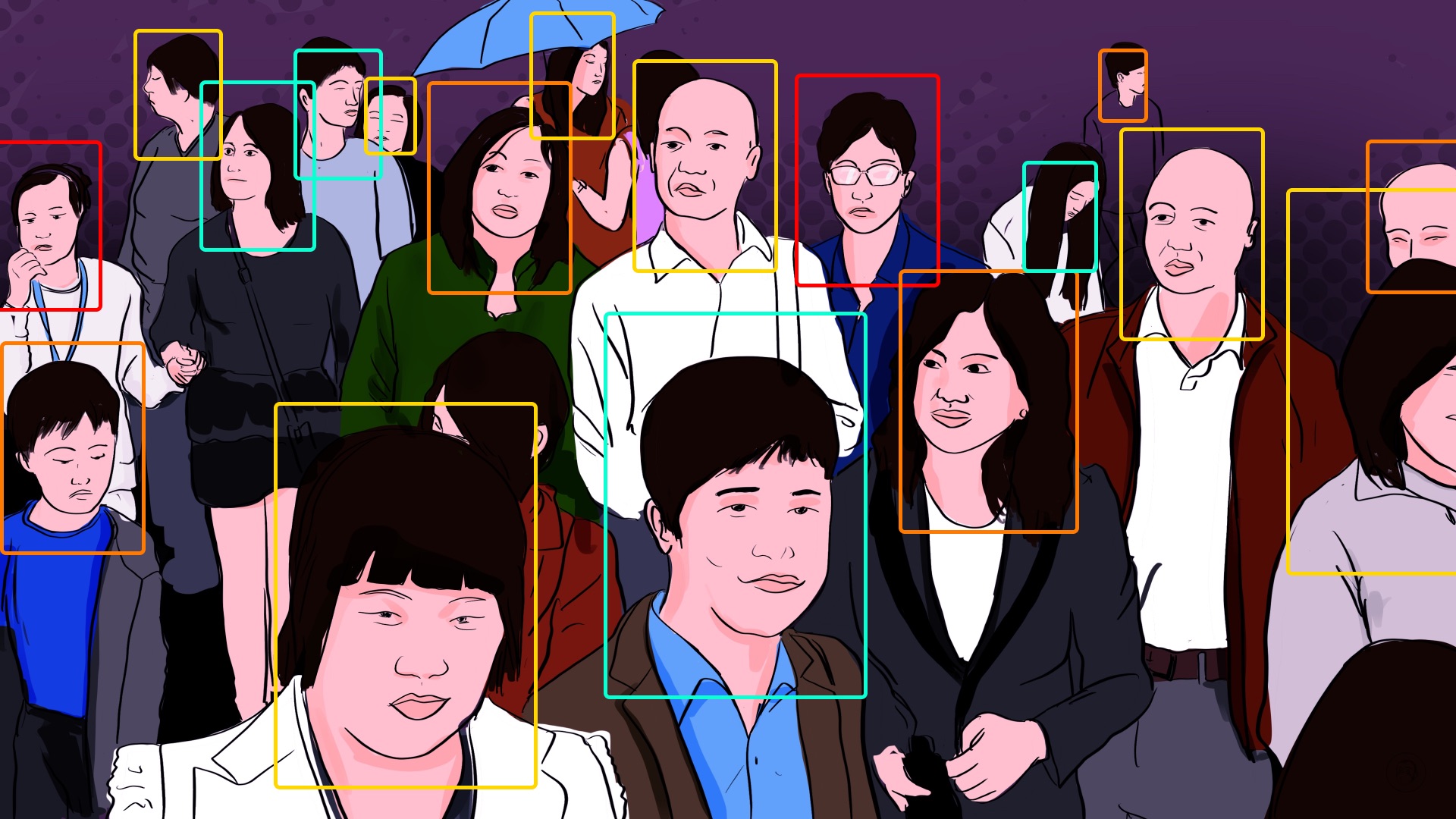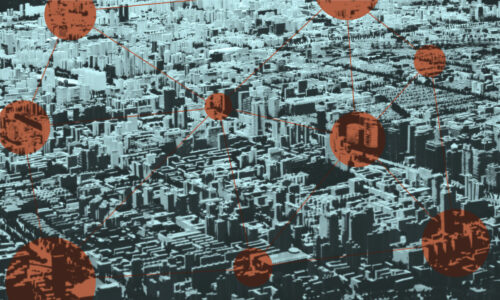How China built the world’s largest surveillance network
"Surveillance State," a new book by Wall Street Journal reporters Josh Chin and Liza Lin, takes a close look at China’s surveillance network.

It’s no doubt hackneyed to mention George Orwell and Nineteen Eighty-Four when discussing China — but then again, a cliché only becomes one because it’s true. At any rate, when Winston Smith is reading the book explaining the nature of the society in which he lives, at one point it mentions the “great problems which the Party is concerned to solve,” the main one being “how to discover, against his will, what another human being is thinking.” Such an ambition may have been a fantasy in the late 1940s, but in the 2020s it may be realized in China, thanks to enormous advances in state surveillance power; through far greater data processing, high-definition cameras, credit systems; and online purchases, algorithms, and personal data being available from corporations at a simple police request — no constitutional guardrails here. Although the authors of Surveillance State, Josh Chin and Liza Lin, take pains to note how much U.S. authorities and U.S. businesses have facilitated this panopticon, they also show how China’s unique circumstances have led it to take state surveillance to the fullest extent perhaps ever seen in human history.
The story begins in Xinjiang, as Chin and Lin follow a Uyghur artist, Tahir Hamut, and his family who feel the walls closing in around them and who eventually succeed in fleeing for the United States. We’re then given a history of China’s surveillance industry, then a tour d’horizon of relevant topics arising from it, including its perhaps beneficial use in Hangzhou to cut crime and eliminate public nuisances (depending on how willing you are to trade that for privacy), to China’s efforts to export surveillance as a public security suite of tools throughout the world, to the government’s use of surveillance and personal tracking in the fight against COVID. Throughout, the authors strive to be fair-minded in their analysis of the various issues while still presenting a story which is bone-chilling in its presentation of a dystopia that exists here and now.
I will confess that beginning Surveillance State with the story of Hamut felt a little odd — I had expected the book to be rigorous, analytical, data-driven, rather than a narrative based largely on one individual. Yet as Hamut’s story progresses, you feel the walls of the Chinese dragnet closing in, the reduction of choice and humanity toward zero. It starts a little slowly but by the end of the second chapter you’re almost gasping for breath at the drama as Tahir and family manage to escape to the U.S.
Chin and Lin smartly give a broader context to surveillance in China immediately afterwards — firstly in current-day Xinjiang, and the astonishing degree to which the Uyghur population is monitored (and how absurd are the actions that count as infractions), and how entire cities are divided into grids for monitoring; and subsequently, a broader look at China’s history, mostly through the remarkable figure of Qián Xuésēn 钱学森.
Qian was a professor of jet propulsion who emerged as the father of China’s cybernetics industries, on which state surveillance is largely based. Qian wrote, “Sociologists, economists, political scientists, geologists, psychologists — experts in all fields — should be trained in systems science, armed with data, and enlisted in the building of models sophisticated enough to predict and optimize the complexities of societal change.” Once change could be predicted, preemptive action could be taken, and the contingent would disappear, giving the perfect harmony of communism.
This certainty, the authors suggest, was greatly appealing to Xí Jìnpíng 习近平. The moral decay of the Communist Party by the mid-2000s from corruption and incompetence made Xi determined to resume both control of the Party and the Party’s control of the nation’s soul. But without popular belief, the Party could not simply lecture:
China doesn’t have churches to enforce morality. You can’t rely just on education. If all you do is lecture people, saying “This is how you should do it,” or “This way is immoral,” you’re not going to get good results… [Using social credit] makes the moral construction process a little more efficient.
In lieu of popular ethics came social credit, and the corresponding data collection — a system that has grown vertiginously as data harvesting methods have become ever more efficient.
Is surveillance in China complete and unavoidable? Not quite. The authors wisely spend a chapter noting the limitations of the system. It’s easy to get caught up in the capabilities of new technology (I remember a teacher extolling the accuracy of Cruise missiles — before finding during the Kosovo War that U.S. bombs often didn’t work if there was fog), so the authors very wisely note the weaknesses of the system, where tech giants Tencent and Alibaba control most consumer data and are loathe to hand it over, lest they lose their competitive advantage. Also:
The Communist Party might control vast amounts of information about China’s society and economy, but local officials often seemed to be cut off from it. A big part of the issue was architectural: most of the government’s data was scattered among thousands of government agencies whose officials and computer systems didn’t always play well with each other — a phenomenon engineers refer to as “data islands.”
Chin and Lin hence suggest that the reputation of surveillance is more important to the Communist Party than the reality. Perhaps, but no doubt someone is working at reducing the human component of these systems, which is yet another cause for alarm.
Surveillance State occasionally strives to be written in a more elegant manner than the time-stressed output of daily reporting. This is a commendable goal, but it sometimes feels like overwriting, when strict factual clarity would be better. “A scattering of clouds floated overhead as Qian and his family faced the gaggle on a dock dividing the harbor’s eastern and western basins,” for example. Or, when taking someone’s blood, “a gush of viscous vermilion liquid [glowed] into the attached tube.”
However, as a quibble this is really quite trifling. Surveillance State is undoubtedly an important, timely, and deeply-researched book, which strives in the best journalistic fashion to ask questions and to present facts without fear or favor. While it is essentially a presentation of the technological possibilities and political consequences of surveillance, it never loses track of the human aspect — if you’re not a tech-head, don’t worry, as the authors never divert themselves with gee-whiz numbers or get lost in the technical complexities. It’s all about the people, the human and the humane. There’s little need for the authors to editorialize: as a view of the present, the facts themselves are already highly unsettling; as an insight into what the future may hold, they are truly alarming.
I have long wondered for how long corporations can profit from our online presence — surely at some point this must be a public good. It may be that, just as the Industrial Revolution eventually brought campaigns to manage the environmental degradation it engendered, so the Information Revolution should bring efforts to improve data hygiene and the online privacy environment. I can only hope so, though the outlook in China seems completely at odds with such reforms. Until then we are living in a world of vast technical possibilities, while failing to consider the moral issues to which they give rise. This ethical conundrum sounds uncannily like the broader context of the outbreak of the First World War — yet while battles for personal data may be less deadly, they absolutely have a similar ability to shape the world in which we live. This must be a first-order political issue of the near future.
For more book reviews, see our Reading China archive.






